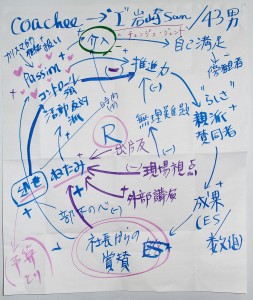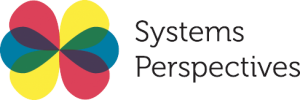 The resources we incorporate into our workshops and into our coaching are the ones that in our experience have proven the most practical and impactful in moving clients from an increased awareness and understanding of systems to new behaviors and results. Feel free to explore the links on this page and contact us with questions about working with these ideas and tools.
The resources we incorporate into our workshops and into our coaching are the ones that in our experience have proven the most practical and impactful in moving clients from an increased awareness and understanding of systems to new behaviors and results. Feel free to explore the links on this page and contact us with questions about working with these ideas and tools.
The Butterfly Model
The overarching framework that we use to orient ourselves to the client’s external, relational, and internal systems is the Butterfly Model of Complex Human Systems. As Charlotte Roberts wrote in The Fifth Discipline Fieldbook, “Understanding and deepening your appreciation of current reality requires understanding the interrelationships and connections among your internal structures (values, beliefs, and attitudes) and external structures (family, work, career).” The “Butterfly” framework allows the coach to maintain awareness of the whole system while working with the client on any particular area of stuckness or challenge.
Systems Thinking & Organizational Learning
 When we talk about adopting a systems perspective we are drawing on and building on the research and observations of some of the most influential management theorists of our time. Like Peter Senge, we define systems thinking as “a way of thinking about, and a language for describing and understanding, the forces and interrelationships that shape the behavior of systems.” As coaches, we help clients examine the forces and interrelationships that shape their own behaviors and the behaviors of the environments in which they operate. In our view, a short list of essential reading would include:
When we talk about adopting a systems perspective we are drawing on and building on the research and observations of some of the most influential management theorists of our time. Like Peter Senge, we define systems thinking as “a way of thinking about, and a language for describing and understanding, the forces and interrelationships that shape the behavior of systems.” As coaches, we help clients examine the forces and interrelationships that shape their own behaviors and the behaviors of the environments in which they operate. In our view, a short list of essential reading would include:
- On Systems Thinking…The Fifth Discipline by Peter Senge, Thinking in Systems – A Primer, by Donella Meadows, The Systems Thinker newsletter from Pegasus Communications
- On reflection and mental models…Chris Argyris
- On personal mastery and visioning…Robert Fritz
- On effective state-of-mind…Brill, Benson, Kopeikina, or Scharmer
- On philosophical underpinnings…Winograd and Flores
- On coaching…O”Connor and Lages, Rock, Adams, or Flaherty
You will find an extensive number of additional resources on this annotated reading list compiled by our colleague Richard Karash.
Emergent Learning
When working with external systems, one of our favorite tools for helping the system see itself for improved outcomes was developed by our friend and colleague Marilyn Darling. As she writes on her 4QP website, “Emergent Learning (EL) is about learning from the work itself. EL Tables help a team or network make meaning together out of their collective experience and a wide range of evaluation data in order to generate insights and apply them to improving current work.” To learn more about Emergent Learning and Emergent Learning Tables, visit the 4QP website, or read the article Growing Knowledge Together: Using Emergent Learning and EL Tables for Better Results, by Marilyn Darling and Charles Parry in the SoL journal, Reflections.
 Story Work
Story Work
Many coaching approaches give dominant attention to the present and future, avoiding the past. We balance our attention to the past (understanding why and how things have been happening the way they have) in reference to the future (goals, options, actions, skills, and capacities). Story work is one technique for safely and productively harvesting learning from past experience in order to create the desired future. In a series of articles entitled Unleashing the Power of your Story, our colleague Steve Ober reflects on how an individual’s “systemic story” is critical to the way he or she makes meaning in the present:
- Leadership, Systems, and Stories
- Key Ideas Underlying Story Work
- Premises that Shape Leadership Story Work
- Three Ways to Understand Yourself in Systems
- Moses, Dorothy, and the Hero’s Journey
- The Essence of Story Work
Seeing Systems
In working to develop capacity, we believe that knowledge, tools, and skills take you only part way. For any important skill or capacity, another factor trumps these: stance, which is comprised of intention, attention, state of mind, and state of the body. For a short article that illustrates how stance affects our ability to see systems, see Leading from a Systems Perspective.




